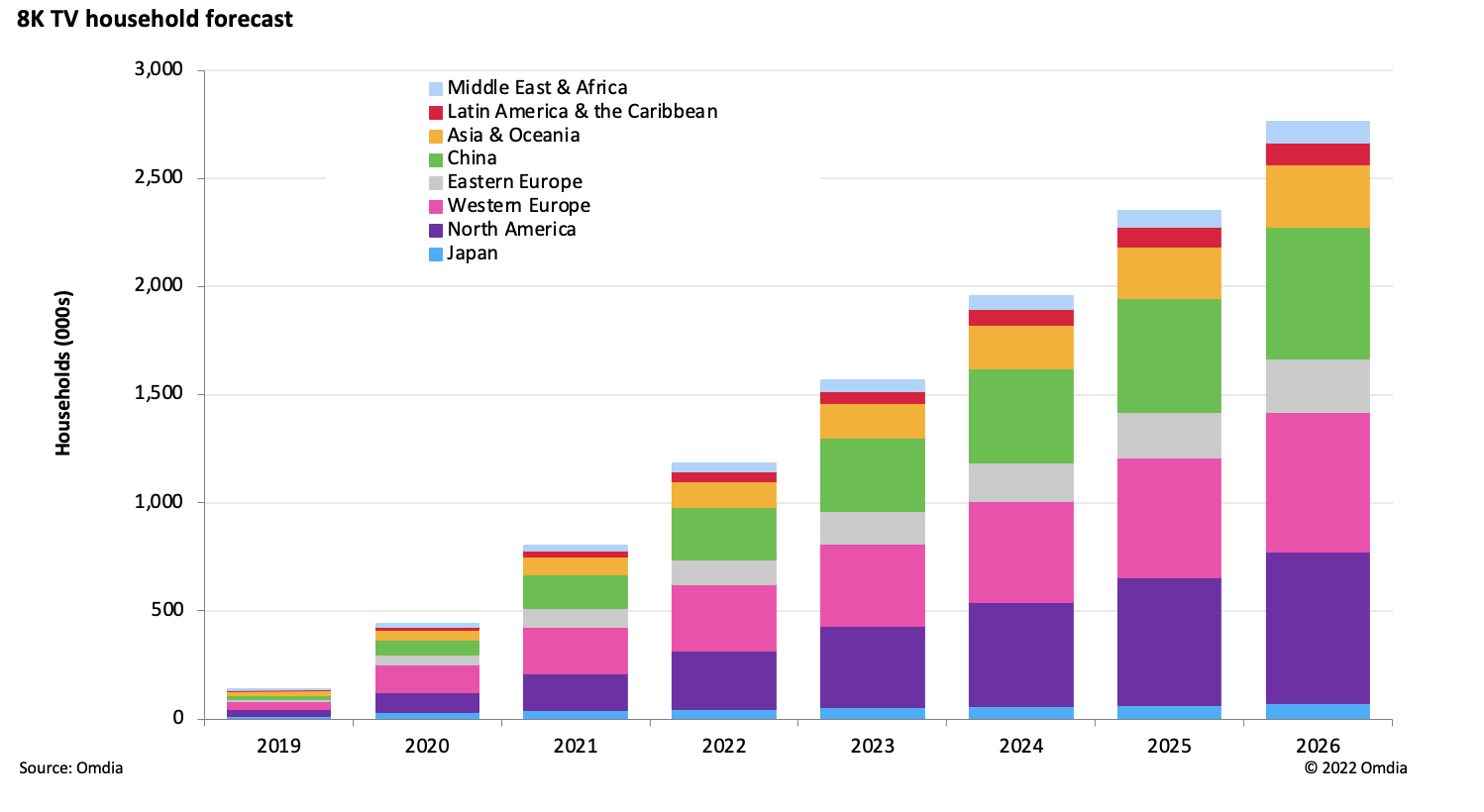
After more than 40 years of operation, DTVE is closing its doors and our website will no longer be updated daily. Thank you for all of your support.
Failure to launch for 8K claims Omdia

8K is failing to appeal to consumers, Omdia’s Senior Director, Media and Entertainment Maria Rua Aguete has said.
Speaking at a session on the reality of UHD deployments at NAB Show, the analyst showed that shipments of 8K TVs only accounted for 0.15% of all TV shipments in 2021. This translated to a little more than 350,000 units globally.
A damning indictment of the lack of interest was Samsung’s cooling on the tech. Samsung shipped 65% of all 8K TV units, however it shipped 18% fewer 8K TVs than a year earlier. The South Korean tech giant is instead shifting its focus to QD-OLED as its premium technology with its 4K resolution.
 In response to the technology’s slow adoption, Omdia has dramatically decreased its forecast of 8K TVs by 39,000 in 2022, and down by 550,000 in 2025.
In response to the technology’s slow adoption, Omdia has dramatically decreased its forecast of 8K TVs by 39,000 in 2022, and down by 550,000 in 2025.
The research house now predicts that just 2.7 million households worldwide will have an 8K TV by the end of 2026. Of that total, 701,000 will come from the US, with Japan – the only market currently to have a live 8K channel – will have less than 75,000 8K households by 2026.
The primary reason for poor 8K TV, Omdia notes, is a lack of native content. Aguete said: “We see no evidence of mainstream 8K TV services, broadcasters are struggling with the business case for 4K.”
The analyst also noted that there will be no one major market driving 8K adoption. “China will not drive 8K compared to North America or even Western Europe, despite the large set sizes as the price pressure is too high,” Aguete said. “We see no convincing market demand of further 8K service development. Even in Japan, where there is a true 8K channel (from NHK), uptake has been minimal.”
During the session, Aguete also commented on the state of play in the 4K UHD market, noting a stability based on the screen size profile of each region.
“While China leads on UHD shipments, its huge number of households means that it takes longer build a UHD installed base, achieving 50% in 2023,” she said. “North America will lead, with half of households having a UHD set at the end of 2020, and 77% in 2025. Western Europe will reach 50% in 2024, with a faster growth rate than China due to a more rapid TV replacement rate.
“Japan lags significantly due to its preference for smaller screen sizes, with only 20% of households owning a UHD set by 2020 and 37% by 2024, despite a wide choice of UHD broadcasts being available.”
In spite of this, Omdia has also reduced its forecast for 2022 by 3.7 million. This comes as a result of faltering demand in China and an overall collapse in Russia as the war in Ukraine impacts consumer spending abilities. Such is the impact of the Russian downturn, that overall Eastern European UHD TV shipments will only surpass 2021 numbers in 2025.


